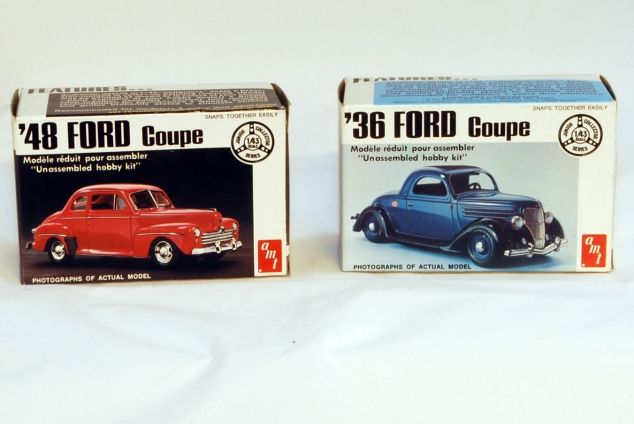Here is a link to Vol. IX
https://ogrforum.com/d...nt/15931049878564932
Cars from the 1940s
When I was a kid, my dad had an ’48 Oldsmobile club coupe and ever sense I’ve had a soft spot for late ‘40s cars with fat fenders.
It’s the afternoon rush hour on Goodman St. These are cars from the 40s.

The cars on the right heading away A’41 Studebaker Champion Coupe by Western Models, a ’47 Chrysler Town & Country by Vitesse and a ’49 Cadillac 61 Sedanette by Brooklin. The cars on the left heading towards the camera are a ’47 Packard Clipper Super 8 Club Coupe by Brooklin, a ‘47 Ford DeLuxe sedan by IXO, a ’48 Chevrolet Fleetline Aero Sedan with wood trim by Brooklin and a ‘41 Ford SuperDeLuxe 2 door by Fleer.
******************
These are unbuilt 1/43 kits from AMT, they have been out of production for a while. The One on the left is a ’48 Ford club coupe and other is a ’36 Ford 3 window coupe. One of these days I’m going to get around to building them. AMT also offered a late ‘60s Corvettes, AMXs, Mustangs and a Chevelles.

![]() I am going York next week so I will not post a new volume. I would like to meet any contributors or followers of the O Scale Motor Chronicle. I plan to be at Friday’s Thursday evening. I’ll be wearing a Black J&C Studio hat, Be sure to introduce yourself.
I am going York next week so I will not post a new volume. I would like to meet any contributors or followers of the O Scale Motor Chronicle. I plan to be at Friday’s Thursday evening. I’ll be wearing a Black J&C Studio hat, Be sure to introduce yourself.
Also I will try to attend any event hosted by OGR






